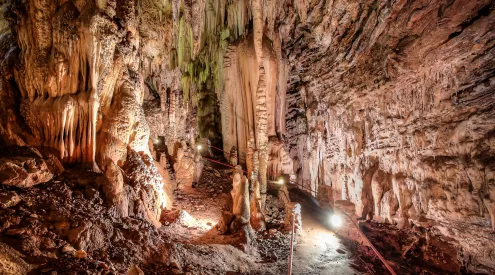Ancient cultures left behind archaeological mysteries and clues to baffle those that came after them. Isn’t it time we started doing the same?

The lost highways of Gort
There is an alarming lack of newly created mysterious relics in the world. Sites such as the Unfinished Obelisk of Aswan, Stonehenge, the Moai of Easter Island, have all been around for, well, ages. And they’re not getting any younger.
This worries me. Especially when a significant number of people cite archaeotourism as one of the main reasons for travel. You need only look at ticket prices and queues surrounding places like The Pyramids of Giza, the Flavian Amphitheatre and other well-stacked rocks to realise this. If there’s such interest in discovering a civilisation through its puzzling structures, why are we not creating more? Have we become too gentrified, too tame to build wild, egotistical monoliths and then pray that a catastrophe will thrust them into the history books? I mean, when last was there a decent asteroid strike or a good-old plague? These era-defining activities are a thing of the past. Sure, history is still being made; it’s just not being built, not like it used to be.
Dubai’s Burj Khalifa is arguably the modern world’s greatest marvel: at 830-metres high, it’s mind-boggling. Held up against the mystery of how the Incas built Machu Picchu, it’s positively boring. The modicum of story that accompanies it is more financial snore than cultural lore. Everything went far too smoothly and it’s all far too well documented.
This thought struck me as I first drove beneath the incandescent purple gantries towering over the highways that finger out into Gauteng from OR Tambo International Airport. For all the contention surrounding them, I found them rather mesmerising. Each time I passed under one, my e-tag echoed eerily through the rental car and the purple haze buzzed above me like a wormhole into an Orwellian future. A future that would see us giving in to the costly back-and-forth of flawed bureaucracy and agree to just pay, like we usually do (incidentally, this future is set to come with a 10 percent hike in daily car hire rates to absorb the costs, regardless of whether you use the highways or not). I hoped it wouldn’t.
This could be South Africa’s Stonehenge! All the ingredients are there. Mirroring the beatnik revolution, strong public disapproval could trickle over into a united people in defiance of inept governance (only with more to show for its efforts than psychedelic tie-dye). En masse, citizens would forge new, dirt roads around Gauteng’s highways, kicking up dust and tumbleweed onto the once-thriving highways and leaving them totally abandoned. In time, the gantries would lose their lustre; their administration booths would become abandoned shells, etched with the scribblings of a generation that had just had enough.
Archaeologists will dig up old, confusing government documents with the word GORT on them (Gauteng Open Road Tolling) and assume that these must be the Lost Highways of Gort, mentioned only in folklore. They would find counter documents by a rebel clan OUTA (Opposition to Urban Tolling Alliance), citing ‘ineptocracy’ as the reason for its downfall. Scholars would search for its meaning, scouring old texts to find a correlation. All they would uncover are vague references to deadly traffic jams and a tarred tomb littered with old cellphone chargers, with the inscription ‘Malibongwe Off-ramp’ on it. The new civilisation living in the province would not care. They’d be thriving off-road trailblazers, forging new paths and never venturing onto those ‘old tarred trade routes of yore’. There would, of course, be tickets for bus tours on the old roads of Gort. Guides would babble on inconclusively about what they thought happened there, based on half-remembered legend and undecipherable propaganda.
But, try as they may, it would always be a mystery as to what exactly happened there and why those giant glowing structures went up in the first place. In fact, it already is.
Column taken from Excess Baggage, Getaway magazine December 2013, on shelves now.




















